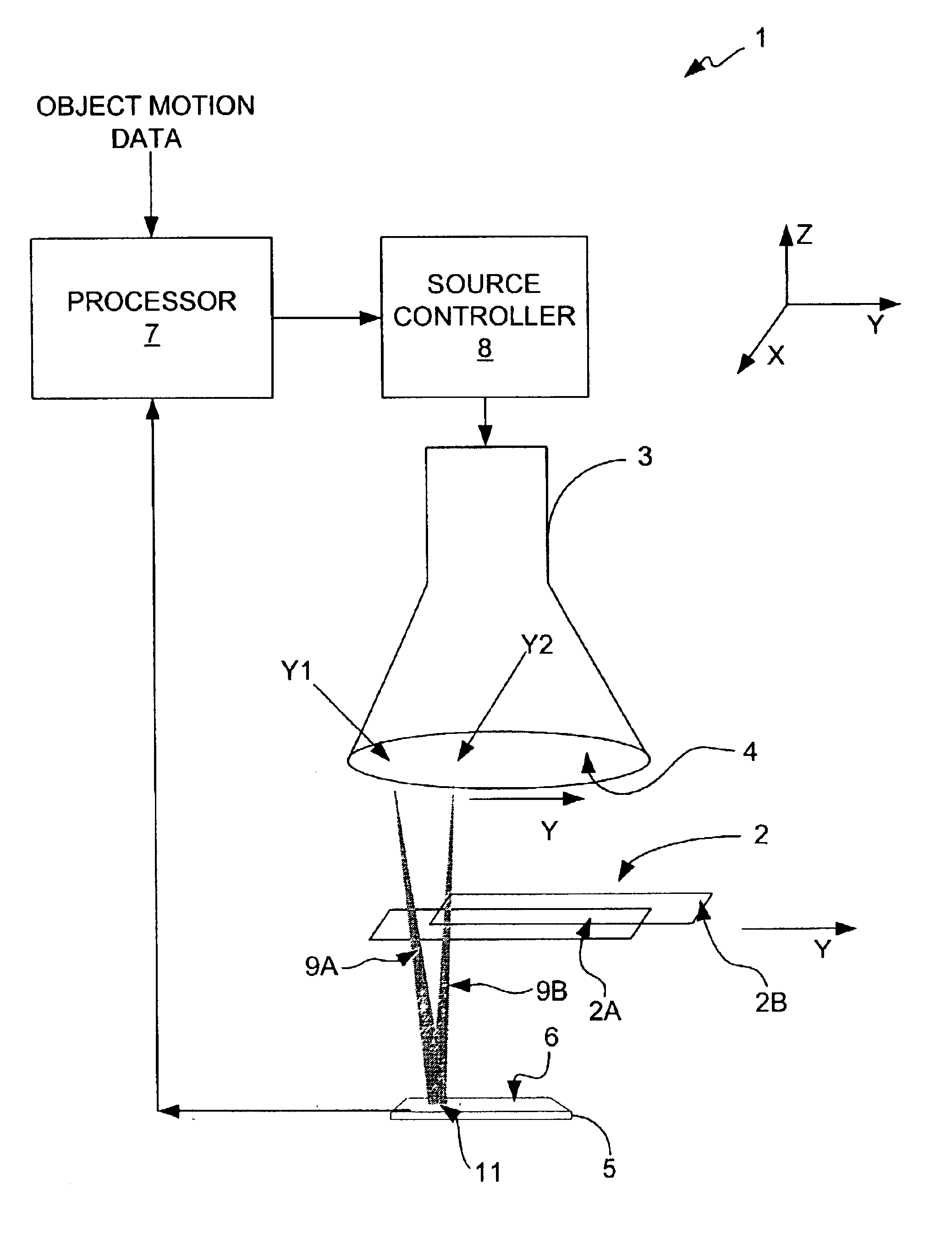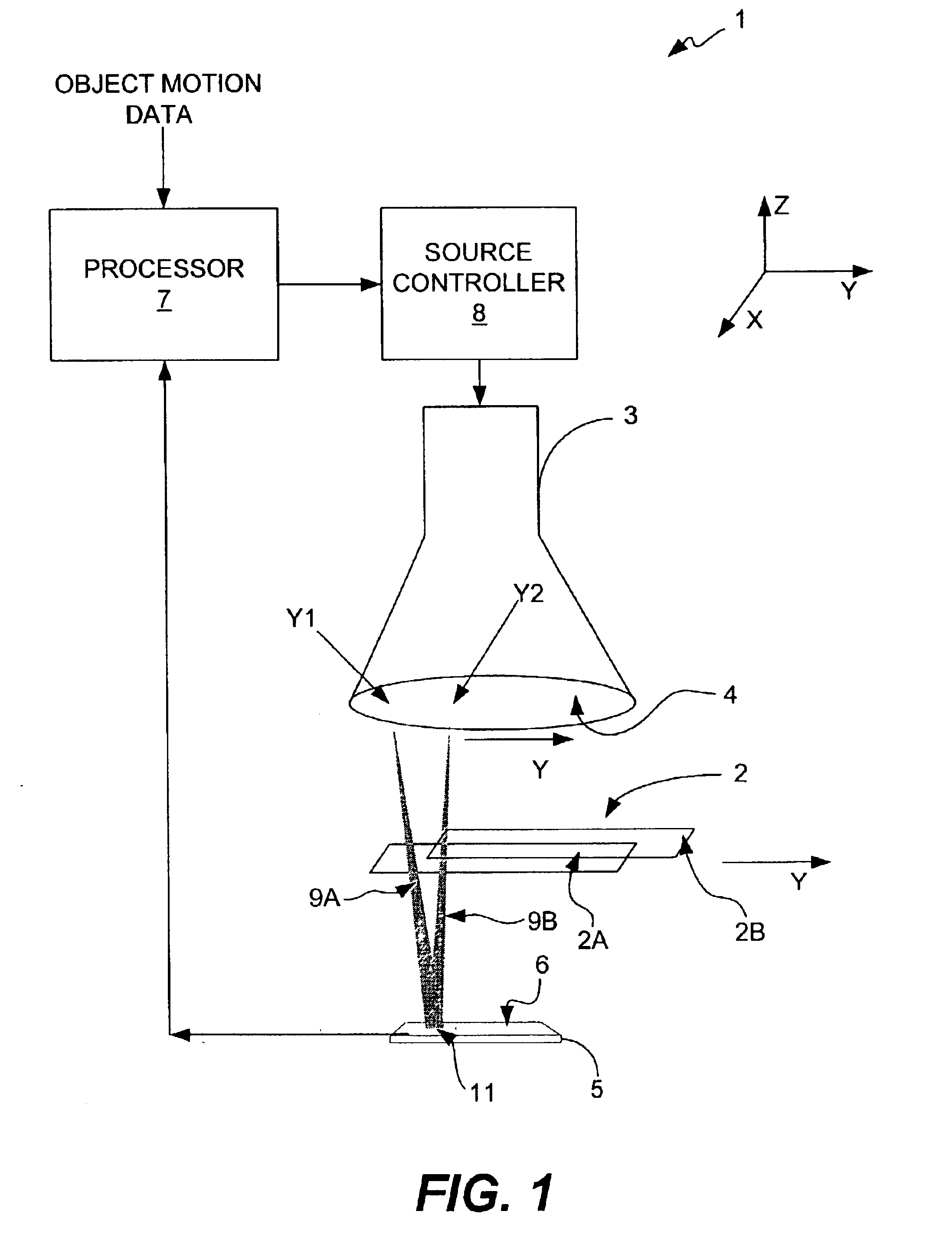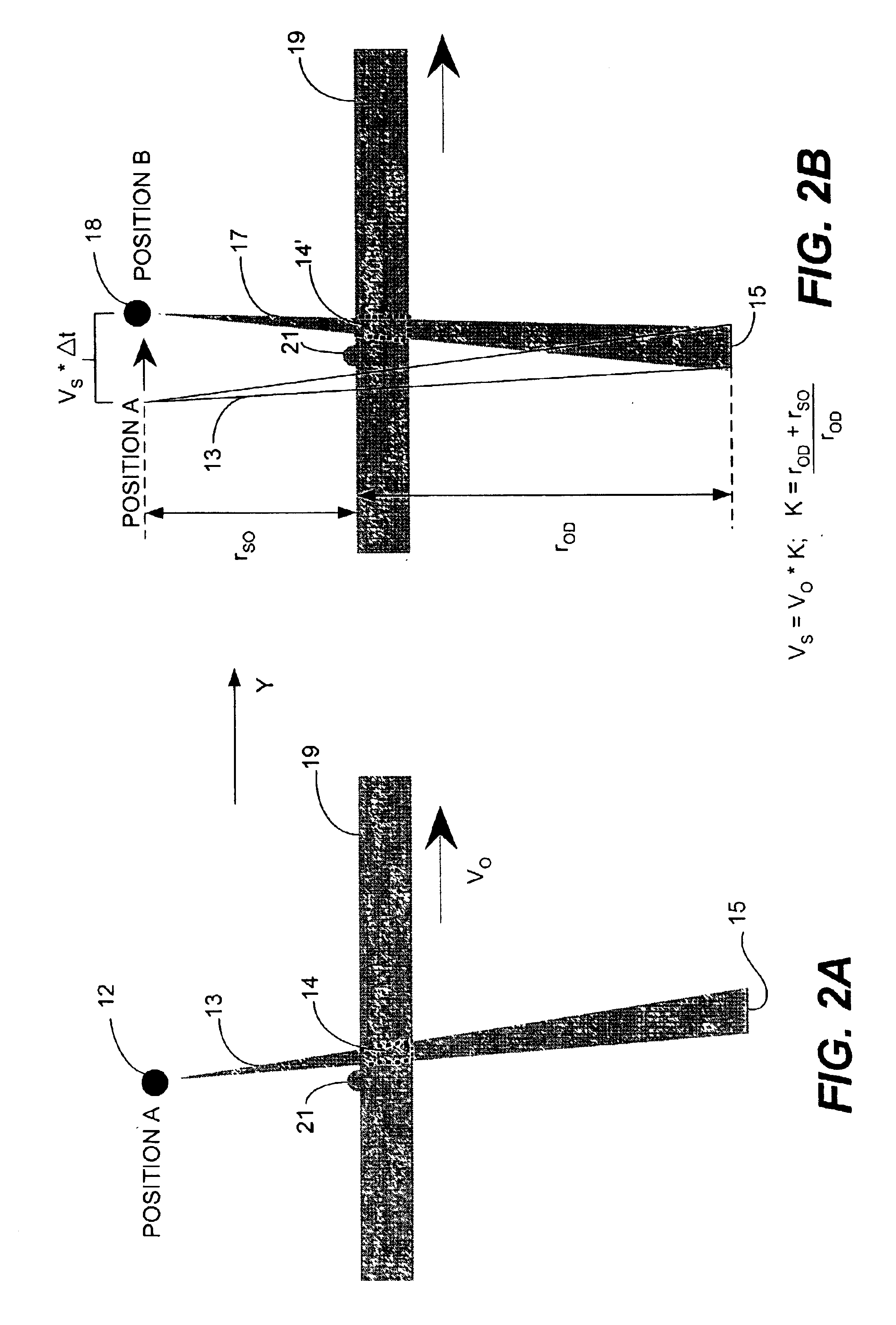Capturing images of moving objects with a moving illumination point source
a technology of moving objects and illumination points, applied in the field of optical imaging, can solve the problems of insufficient intensity of illumination provided by the illumination source insufficient light intensity to allow short exposure times to be used, and highly undesirable to start and stop the object during imaging, etc., to achieve the effect of increasing the throughput of the imaging system, reducing the blurring, and reducing the blurring
- Summary
- Abstract
- Description
- Claims
- Application Information
AI Technical Summary
Benefits of technology
Problems solved by technology
Method used
Image
Examples
Embodiment Construction
[0013]The present invention is directed to projection imaging of an object with a point source of illumination where the location of the point source is addressable, or able to be electrically positioned, in at least one and, in applications in which three-dimensional imaging is performed, in two dimensions. A point source of illumination is defined as a region in space that is comparable to or smaller in dimensions than the imaging resolution desired from the system from which radiation of any form that is used in imaging can be projected. Such radiation can be any radiation that travels in straight lines and interacts with an object, thereby resulting in a change in the nature of the radiation in some form that can represent a property of the object. The radiation could be x-ray radiation, visible light radiation, infrared or ultraviolet radiation, other electromagnetic radiation, such as radio waves or terahertz radiation. The radiation could also be acoustic radiation, for examp...
PUM
 Login to View More
Login to View More Abstract
Description
Claims
Application Information
 Login to View More
Login to View More - R&D
- Intellectual Property
- Life Sciences
- Materials
- Tech Scout
- Unparalleled Data Quality
- Higher Quality Content
- 60% Fewer Hallucinations
Browse by: Latest US Patents, China's latest patents, Technical Efficacy Thesaurus, Application Domain, Technology Topic, Popular Technical Reports.
© 2025 PatSnap. All rights reserved.Legal|Privacy policy|Modern Slavery Act Transparency Statement|Sitemap|About US| Contact US: help@patsnap.com



